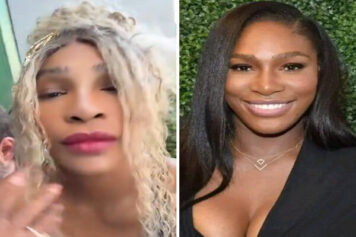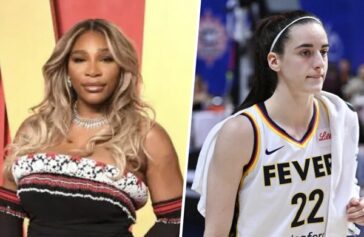Prejudice seems to follow black people wherever they go, but none of those destinations are quite as senseless as when it happens in a high-end store.
The story of a Haitian-American former employee of Moschino claims the West Hollywood store at which she worked practiced active racism in her face. She also says that the Italian luxury clothing company discriminated against the store’s black clients as well.
Initially reported by TMZ, Shamael Lataillade said her employers used “Serena” as a racist code word for black shoppers who didn’t look affluent enough to be shopping at the store.
“She says the woman would call them a ‘Serena’ and instructed other employees to follow and watch them closely — sometimes even writing down their license plates,” the tabloid reports.
Additionally, Lataillade reportedly accused the supervisor of mocking her as a voodoo practitioner and says she was fired for speaking out against the racist environment that was sustained at the store.
As of late, high fashion and racism have been permeating the news. Just last month, Prada was at the center of the storm following a campaign featuring figurines and merchandise reminiscent of racist, dehumanizing ad campaigns of Jim Crow lore.
https://www.facebook.com/chinyereezie/posts/10102198924210054
The myriad of dynamics at play here may appear as if they’re separate from the whole, but a broader look at the overall picture reveals an ongoing bias as far as black potential customers, and the overall perception of a black dollar that is weak by comparison to the average white dollar.
With black financial numbers almost a quarterly happenstance on local news networks, it is easy to think of a scenario in which an already susceptible population of retailers of high-end fashion imagine that most people can’t afford their items, especially most black people.
Whether from a benign sentiment, or one that is malicious malignant, these attitudes determine how an entire group of people are treated, then those attitudes are institutionalized into the broader construct of whatever corporate apparatus decides they belong.
That’s how a prejudiced thought or attitude then becomes institutionalized as racism.
Back in 2013, a very similar paradigm emerged from high-end clothing stores in New York City. Then 19-year-old college student Trayon Christian was detained by two undercover police officers after purchasing a high-end Ferragamo belt from the Barney’s New York City location at E. 47th St and Madison.
He later told the New York Post the undercover officers asked how he could afford such an expensive item, put him in cuffs, and took him to the station for 45 minutes of questioning before allowing him to go home.
The young man claimed police officers told him he was accosted at the behest of staffers from the department store where he’d recently purchased his belt.
A day after Christian’s story was made public, a similar tale involving 21-year-old Kayla Phillips came to light. The nursing student told the New York Daily News she was “attacked” by four undercover police officers after purchasing a $2,500 Celine bag from Barney’s.
Like Christian, Phillips was accused of buying the bag with a fake credit card. She has also filed suit against Barney’s.
Actor Robert Brown, from HBO’s drama series Treme and the film Finding Forrester, sued Macy’s in New York State Supreme Court for violating his constitutional rights that same year.
He was detained after purchasing a $1,300 Movado watch for his mother at Macy’s Herald Square flagship store in Manhattan. He says he was handcuffed and held in a holding area inside of the store for an hour before being released.
These are only a sample of the many instances of racist practices and prejudicial bias that has been exhibited by the aforementioned stores in instances where black folks were where they were supposed to be, doing what they were supposed to be doing, but were the target of both unspoken and spoken racial doctrines time and time again.
There’s no telling how many individuals have lost time, money and even employment due to the shenanigans of over-anxious officers aimed at black faces by store management and sales personnel?
As of 2016, black women became the most educated group of people in the United States, the fastest growing group of business owners in the country. And between 2011 and 2016, the black middle class and upper middle-class incomes both rose by 2 percent, with black folks making over $200,000 or more growing by 1 percent.
The number of impoverished or working poor households fell by 3 percent in that same span.
Despite these times, black buying power continues to go up over time, albeit at a very slow pace.
How many times have they literally chased money out the door with their attitudes toward black and brown people who they may feel didn’t “look the part” of someone who could or would be wearing Moschino, or Ferragamo or Movado, or whatever?
No one can know for certain. However, it cannot be overstated that racism is as static to the American experiment as mud is on a pig farm. It’s here, it’s there, it’s everywhere.
One can only guess how long black folk with continue taking such excoriating disrespect just on the strength to have overpriced fashion trinkets that depreciate almost immediately.
Economic power is something that has proven to rattle the cages of any racism that has a financial tilt. With current estimates of black buying power sitting around $1.4 trillion, the ability to leverage these collective assets for greater change is something that many are still getting a handle on.



